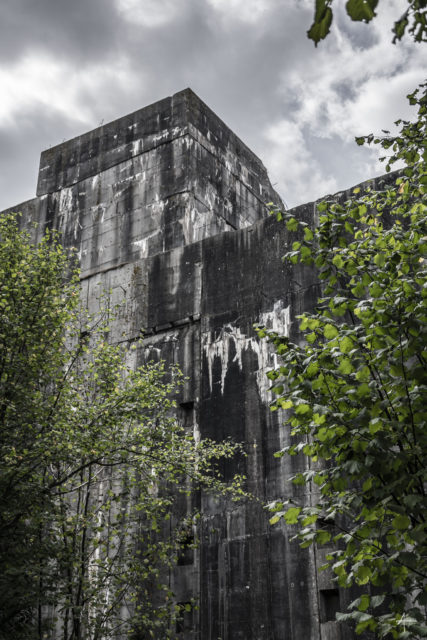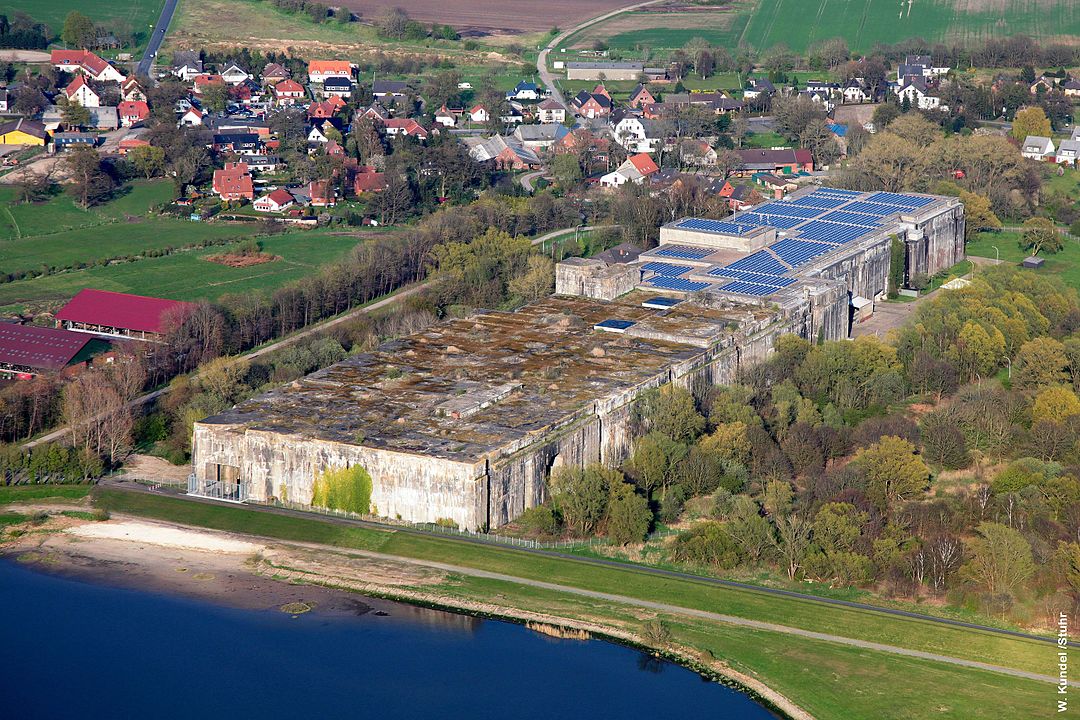During World War II, a bunker codenamed Valentin was built on the Weser river in the Bremen suburbs.
Its purpose was to produce German submarines, but not a single U-boat was ever built there. Today, it stands as a memorial to the war and the crimes committed by the Nazi regime.
By 1943, the Allied Forces had air superiority, and it was growing increasingly difficult to build vessels in German shipyards without drawing the enemy’s attention. Consequently, there was a need for hidden submarine shipyards, and this was the inspiration for the Valentin bunker.
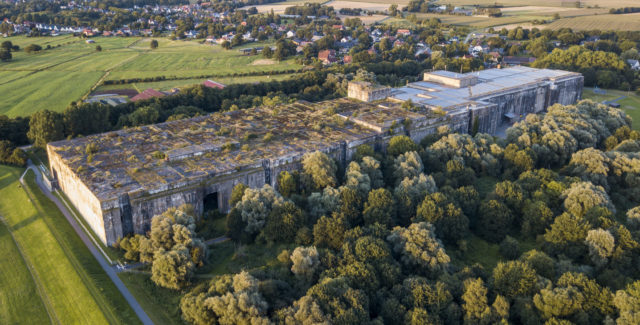
Construction of the enormous bunker began in 1943 and lasted until 1945. Measuring 35,000 square meters (41,860 square feet) meant that the Valentin bunker was the largest free-standing bunker in Germany and the second largest in Europe.
The interior of the shipyard was divided into 13 assembly bays. The walls and ceilings were between 4.5 meters (15 feet) and 7 meters (23 feet) thick to protect the assembly lines. In total, 500,000 cubic meters (650,000 cubic yards) of concrete were used in construction.
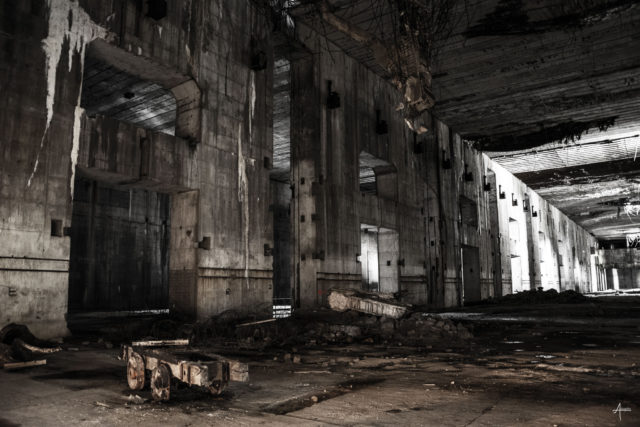
Part of the bunker opened onto a small canal that ultimately led to the Weser river. This meant that either completed submarines could leave this way or completed sections of submarines could be transferred to barges so that they could then be transported to other shipyards for assembly.
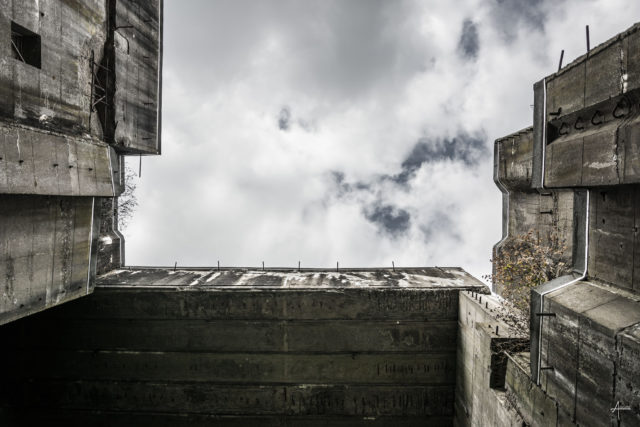
All the work was undertaken by forced labor using prisoners of war, civilians, and concentration camp prisoners. About 7,500 prisoners worked on this project, although some estimates have it as high as 10,000-12,000 people. The workers were housed across seven camps at a distance of 3-8 kilometers (10-26 feet) from the bunker.
The construction work on the bunker was carried out around the clock, with malnourished prisoners working 12-hour shifts.
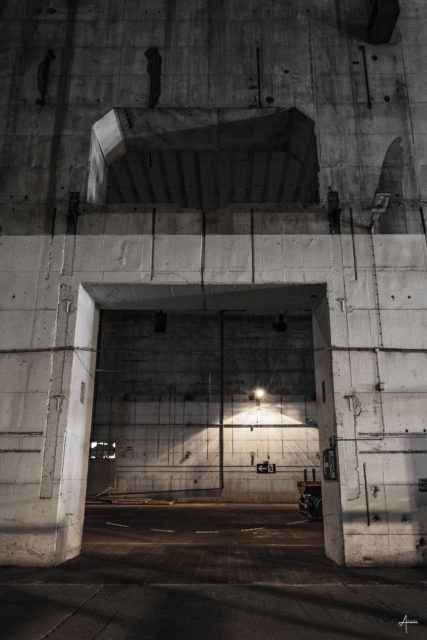
It was very dangerous to work on this project, and records indicate that, during the construction, there were around 1,750 fatalities due to hunger, strenuous work, illnesses caused by unsanitary living conditions, and also more brutal reasons. Tragically, only the names of between 553-1,144 victims are known.
The construction of this shipyard was one of the largest military projects in Nazi Germany. Both the design and supervision were undertaken by Organisation Todt, with Marieneoberbaurat Edo Meiners in charge. The supervising engineer, Erich Lackner, later became one of Germany’s most prominent civil engineers.
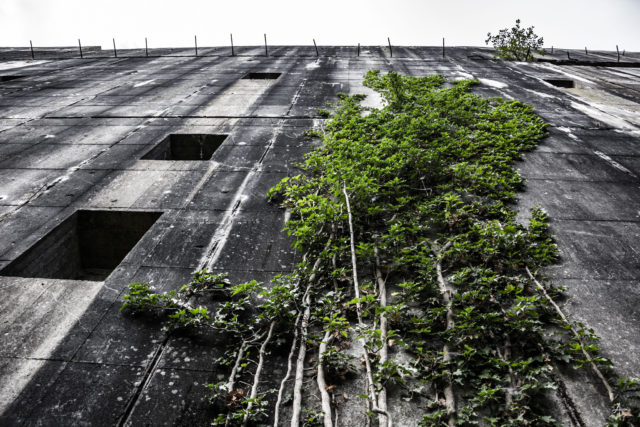
Construction work was halted in March 1945 due to severe damage from a British air raid, which destroyed an unfinished part of the bunker. By that point, about 90% of the facility had been completed, and submarine production was scheduled to begin in May of that year. However, construction work did not resume after the attack.
Consequently, not a single submarine was built at the Valentin bunker, and a site that was supposed to deliver at least 14 boats a month was abandoned. In addition, a second bunker codenamed Valentin II was scheduled for construction but never made it off the drawing board.
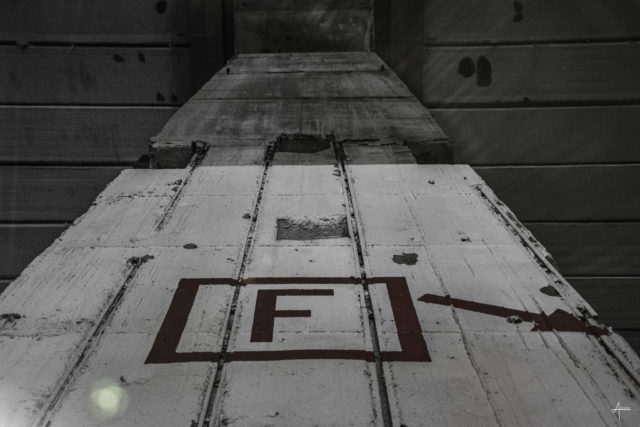
With all construction work ceased, a decision was made to send the labor force to the Bergen-Belsen concentration camp. To this end, the prisoners were transported to a seaport where they were put onto three ships. Tragically, Allied bombers attacked the ships and sank two of them. In the end, only 458 prisoners from those two vessels survived.
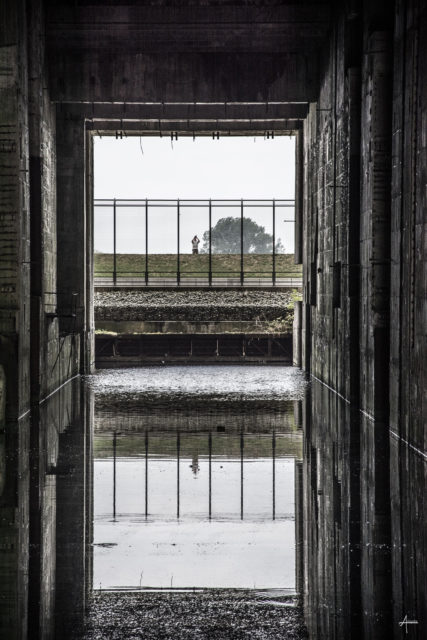
After the war ended, there was great debate over what to do with this structure. It had, after all, been built using slave labor. There were suggestions that it should be demolished, but that would have resulted in severe damage to the surrounding area. Instead, it was used for target practice and munition experiments by the Allies and later as an adventure playground for children.
In the 1950s, the German Army used it as a training ground, then in the 1960s, the German Navy used it as a storage depot.
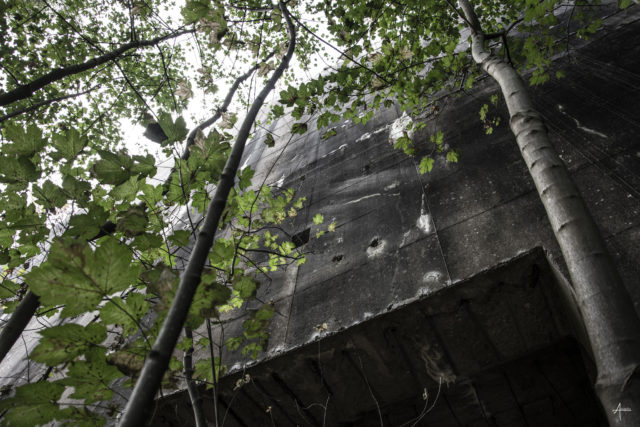
When the cost of upkeep became too much for the Navy, the Valentin bunker was put up for sale in 2008. The shipyard was given a new lease of life when it was taken over by the Senate of the Free Hanseatic City of Bremen in 2010.
Over a period of five years, the grounds were remodeled by the Regional Agency for Civic Education, and in 2015, it opened to the public as the Denkort Bunker Valentin memorial site.
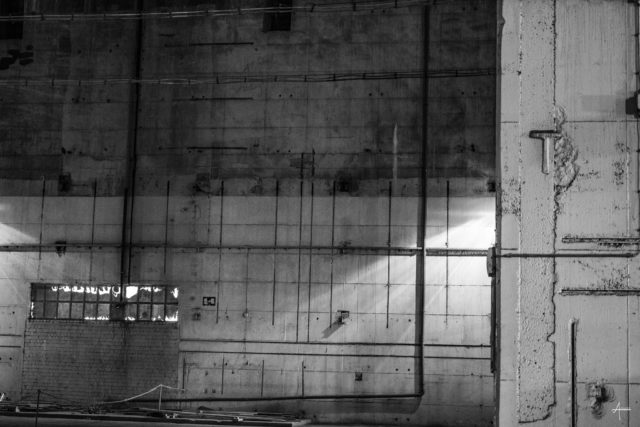
On the site today is a visitor center with an exhibition about the bunker’s history. There is also an information trail that spans 25 stations and informs visitors of the Valentin bunker’s history by means of photos, eyewitness accounts, and explanatory text.
Guided tours are available on Sundays between 11 am and 1.30 pm, while an audio tour is available at any time. There is also a multimedia guide available that gives extra information on the stations that form part of the trail. Admission is free, but a charge is made for tours. The site is closed on a Monday.
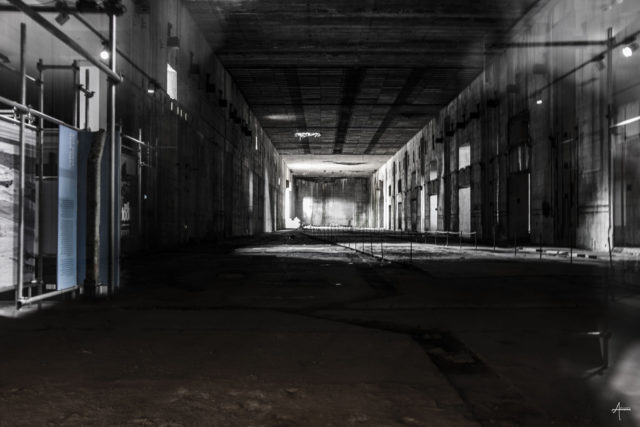
These images of the Valentin bunker were taken by the talented photographer Almer Steegstra. Almer kindly gave us his permission to share these pictures. There is a substantial collection of his amazing work on his Flickr account, which you should definitely check out. Almer loves traveling, shooting landscapes and architecture, and sharing his experiences.
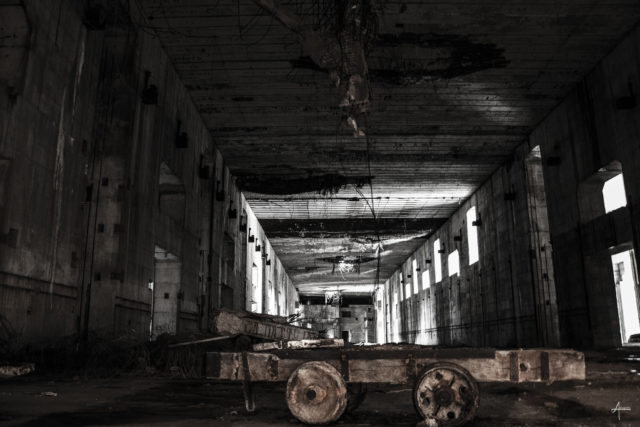
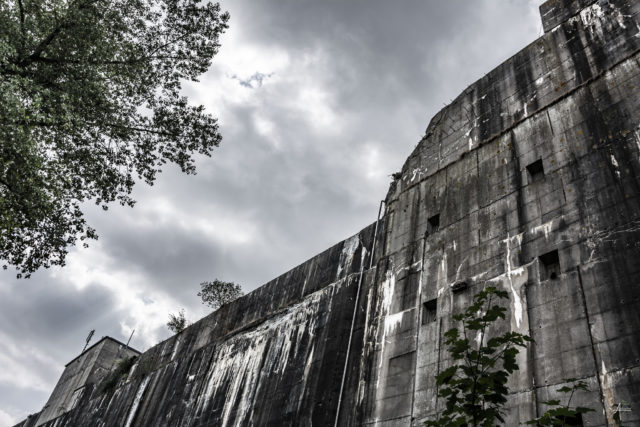
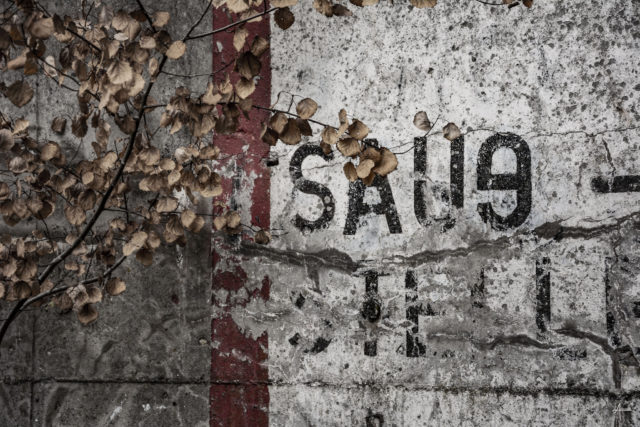
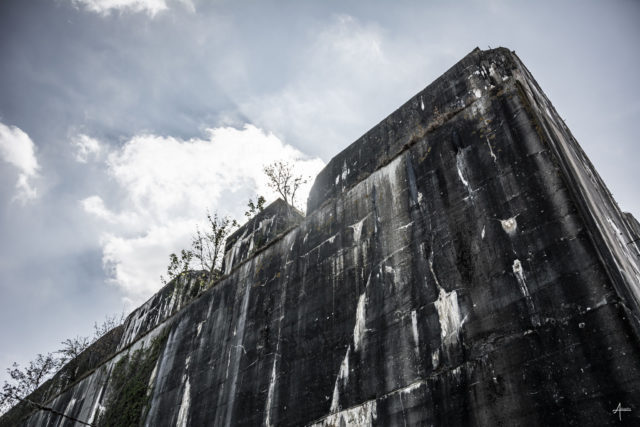
Another Article From Us: Maginot Line fort with guns still inside the turrets
